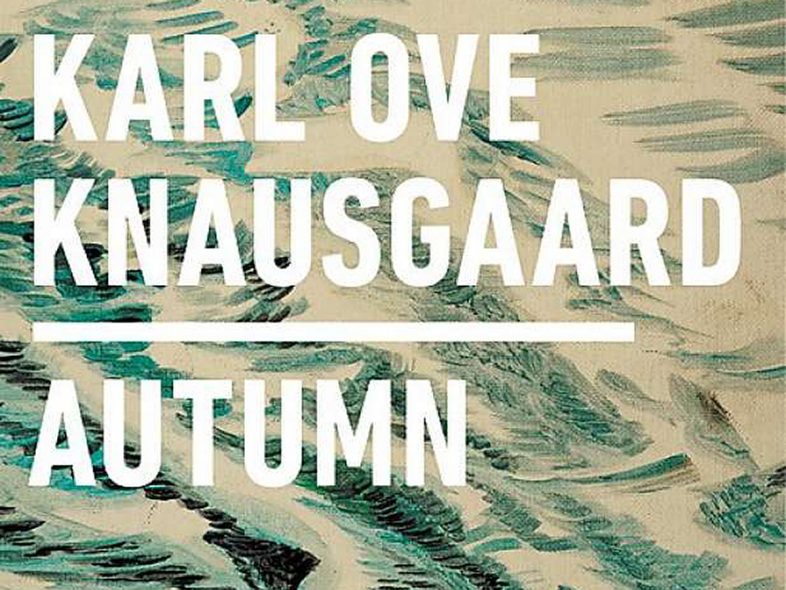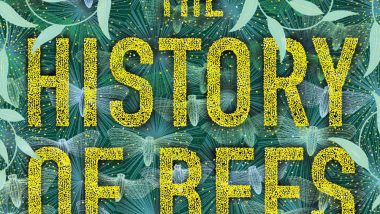
By Robert J. Wiersema
Autumn
By Karl Ove Knausgaard
Knopf Canada
240 pp; $36

We should make something clear, right from the start: Autumn, the new book from Norwegian writer and literary phenomenon Karl Ove Knausgaard is not the long-awaited English translation of the sixth and final volume of his bestselling auto-fiction My Struggle.
Rather than resolving the My Struggle series, Autumn is the first volume in a new quartet of interlinked books, based on the seasons, and addressed (literally) to his unborn daughter. This central conceit signals a significant shift in Knausgaard’s work: rather than looking inward, Autumn is directed outward, introducing his daughter to the world around him, which she will soon be experiencing for herself.
It’s not a wholesale change, however; Knausgaard’s preferred subject remains himself. As he writes in the first of three “letters” to his daughter, “you will come to see it in your own way, you will experience things for yourself and live a life of your own, so of course it is primarily for my own sake that I am doing this: showing you the world, little one, makes my own life worth living.”
Along with the letters, Autumn is made up of capsule observations, pensées , if you will, detailing specific aspects of Knausgaard’s world. The observations themselves are sharp and compelling, rooted in concrete detail, with a matter-of-factness that often veers toward the objective or scientific. Writing about wasps, for example, Knausgaard begins almost clinically: “The body of a wasp is divided into two parts, of which the hindmost is shaped something like a faintly rounded cone, with a smooth and shiny surface, while the front part is more spherical and only a third the length of the hind part, and yet the legs, the wings and the antennae all extend from the front.”
Similarly, in describing bottles, he writes, “though the bottle’s basic form is always the same, a smooth, cylinder-shaped body which narrows into a neck, its physiognomy is surprisingly multifarious.”
These observations, however, quickly elide into something more deeply personal, more interior. In “Wasps,” for example, Knausgaard goes on to write of encountering a wasp nest while painting his house, and in perhaps a textbook Knausgaardian moment, comments that “their aggressive movements and their angry buzzing were enough to make me climb down and light a cigarette as I pondered what to do.” (I admit to laughing out loud.) Ultimately, he deals with the issue with a matter-of-fact detachment that belies pragmatic cold-bloodedness. “Bottles,” meanwhile, develops into a description of his own father’s drinking, and of a childhood encounter with a local alcoholic that would be a fine turning point in a short story.
The short pieces in Autumn, never more than two or three pages long, are marvels of concision, opening out into epiphanies with an effortless grace, but rooted in the physical world: the colours of spilled petrol, the shifting tones of grass and trees as autumn slips toward winter, the faces of loved ones. There is never any sense of sameness, and each section has its own quiet power that merits a slow approach to the book as a whole. Knausgaard is well-aware of his own tendencies toward melancholy (“nearly all my thoughts and associations ran in that direction, ending in problems and worries and darkness instead of in joy, ease and light”) and avoiding sentimentality through clear-eyed self-awareness.
At times, it’s perhaps a little too clear-eyed. There is nothing sensationalistic when Knausgaard writes, say, about vomit (including a lengthy description of different colours and consistencies) or urinating, but readers will find themselves shuddering nonetheless at the concrete detail.
The question of discretion also undermines the central conceit of the book as a whole. Certainly, parents are encouraged to be forthright, direct and clinical when discussing sexuality with their children, beginning at an early age with their own body parts. The first third of “Labia” could certainly fall under that description (although some parents may still be unconvinced), and Knausgaard underscores this very point when the pieces shifts to a discussion of the male gaze and misogyny, and how the “relationship between father and child, which when it came to nudity was characterized by exaggerated caution,” leading into a discussion of misplaced shame.
When the piece turns toward desire, his own desire, however, particularly regarding cunnilingus, one can’t help but question the idea that Autumn, and the quartet, are truly intended for his daughter. She’s probably the last person who should read it.
Which is fine. For anyone else, and especially devoted readers of Knausgaard, Autumn is a beautiful, thought-provoking book, often uncomfortable and shocking, but as frequently profound, the sort of book one can imagine revisiting often, finding something new, something significant, in every reading.


